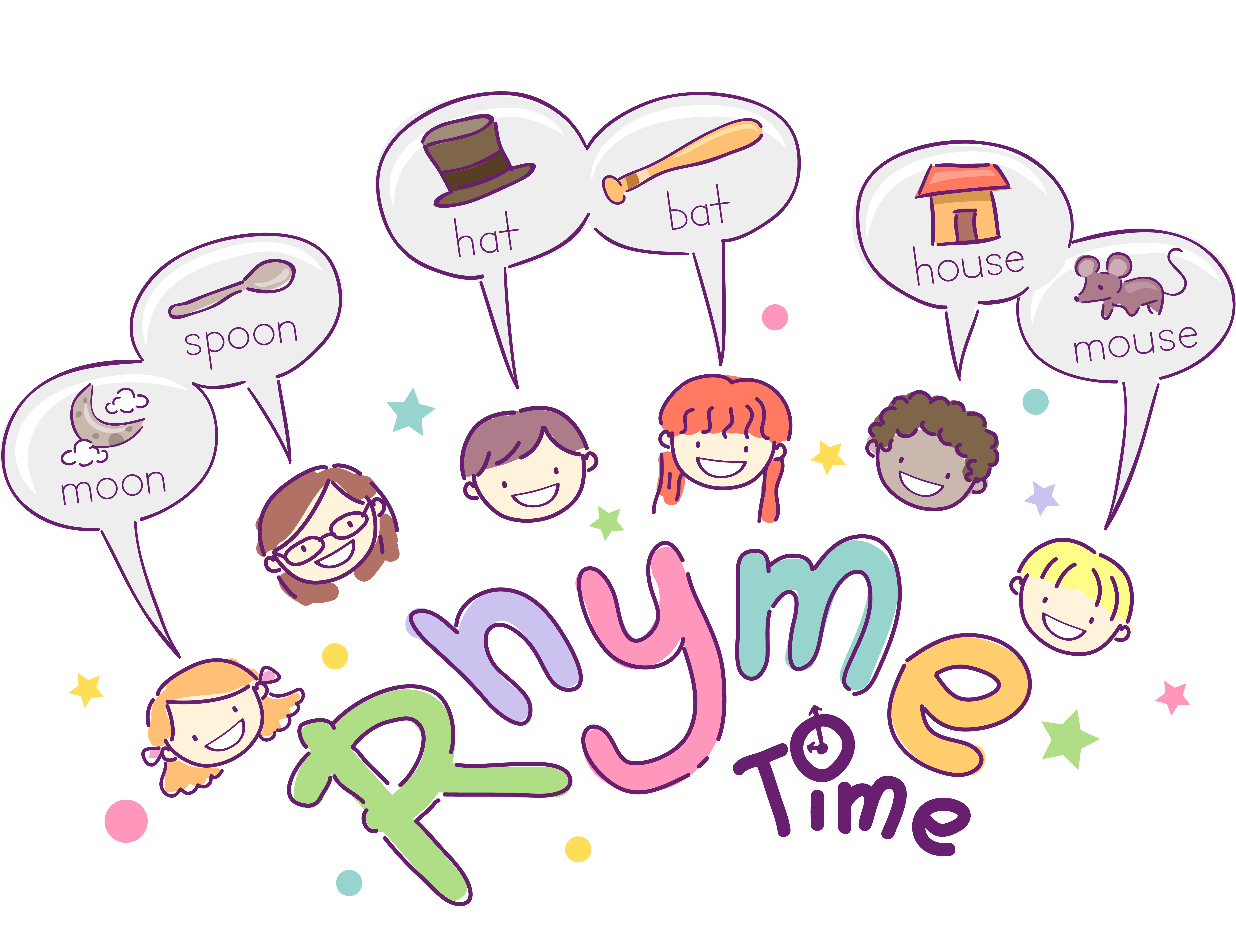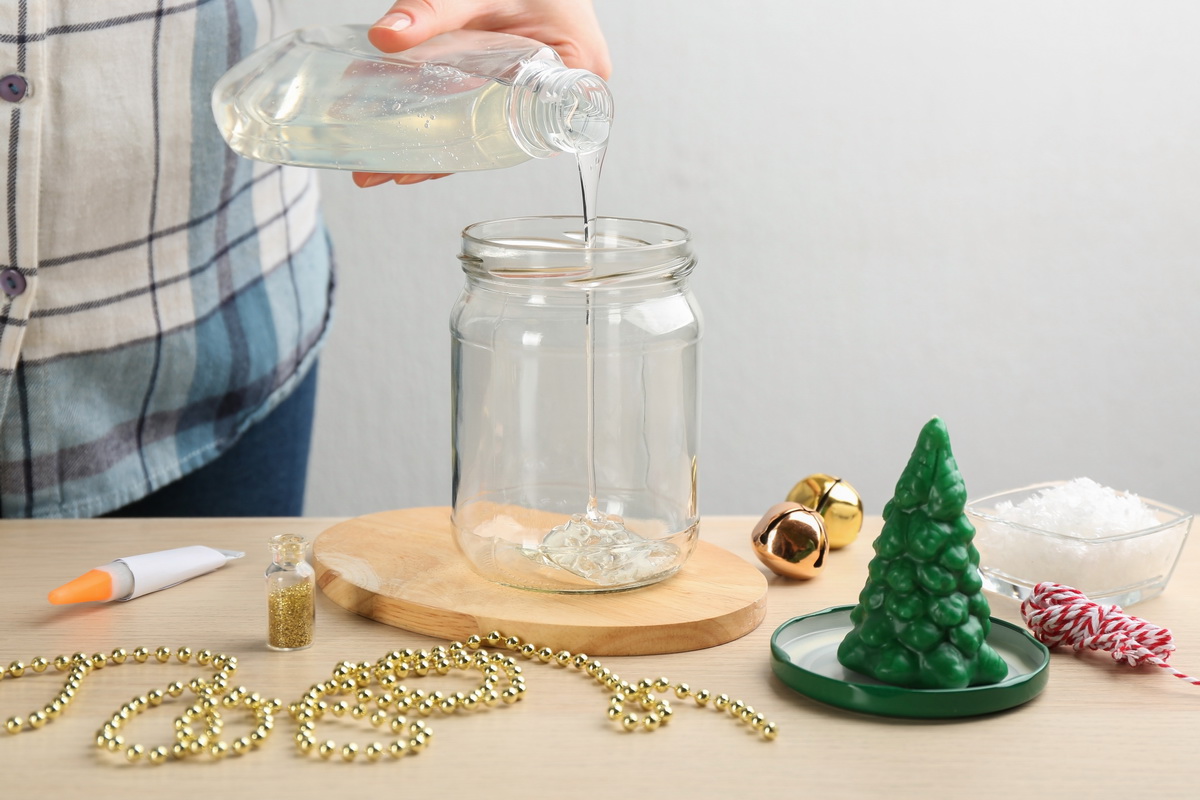How to Teach Rhymes with Actions & Activities — 8 Ways to Develop Child’s Language Skills
Oct. 14, 2019
Nursery rhymes have been around for generations, and until now, chances are you’ve likely never thought too deeply about why these odd sayings seem to stick around, especially when many are outdated and reflective of a bygone era. The truth is that it’s not so much about the meaning of the words so much as it is about the sound.
Research into reading acquisition has long supported the notion that rhyming is important for kids learning phonics in preparation to read. While reciting funny nursery rhymes, kids are indirectly studying word families, and listening to phonemes in similar words. This can boost early language skills to enhance child development, while predicting a student’s future reading ability.
Let’s take a closer look to understand the benefits of learning to rhyme, before we reveal how to teach rhyming in 8 easy and engaging ways!
How Rhyming Boosts Pre-Reading Skills
One could not downplay the importance of teaching nursery rhymes to children. Not only do these catchy lines capture a child’s interest and imagination, they help kids to experience the natural rhythm of language. Additionally, they teach children to speak with expression, putting emphasis on certain words. This rhythm and inflection is what helps kids to eke out the most important part about learning rhymes: to isolate syllables and phonemes in words! By segmenting parts of words, kids gain a deeper knowledge and understanding of words, letters, and sounds, better preparing them for reading.
So, by reviewing rhyming words with your kids, you can help them study letter sounds in a playful, fun way. What’s more, is that you can also use your child’s understanding of rhymes as a predictor of any potential reading difficulties to come.
Now that we know precisely why learning to rhyme is so important, let’s take a look at strategies and activities parents can use to teach this incredible skill!
10 Fun Activities to Teach Rhyming Words
Beyond memorizing nursery rhymes, it’s important for children to get moving and engaged with rhyming, so check out the following fun ways to teach rhymes with actions:
Rhyming Puzzles
Puzzles can be bought as a set from major retailers like Amazon, or they can be downloaded and printed from blog sites or Teachers Pay Teachers, or you can feel free to make your own! Because learning to rhyme is more about listening than reading, it’s important to use pictures instead of written words, especially for preschoolers who are unable to read. All you’ll need is construction paper, a computer and printer, scissors, and glue to get started!
First, think about the rhyming pairs you would like to include and make a list. For instance, choose words like “hat” and “cat” and write them down. Use clip art or Google Images to search for cartoon picture thumbnails that can be copied and pasted to a word processor. Once all pictures are ready, print them out and cut them to paste on construction paper. When gluing, be careful to make sure images are lined up next to their pairs, spaced a few inches apart. Cut the puzzle pieces and scatter them on a table and watch as your child pieces together the rhyming couplets by saying the names of each picture, listening for rhymes!
Play a Round of Rhyming Bingo
Bingo games are always easy to make at home, so create a DIY version, or print out game cards from an online blog! Simply prepare cards that have pictures that correspond with rhyming matches, making sure to create a slightly different version of the card for each player. During gameplay, call out the rhyming matches and have children mark the matches using coins or small pieces of candy. The first player to call “Bingo!” wins!
Play a Homemade Memory Game
Like the idea above, memory games are easy to make from scratch with materials you have around the house! Grab some construction paper or cardstock and follow the same steps above to create a list of rhyming pairs. Search for pictures on the web to print and cut out to glue on the cardstock. Make neat, even-sized squares and flip the pictures face down in even rows. Play a game of memory with your child to see her skills in action!
DIY Animal or Monster Feeding Game
Do you have a few shoe boxes laying around the house? Use them to make this fun rhyming game! Dress up the boxes with construction paper or decorations and make them into monsters or animals to feed! Prop the lid up if connected to the box or glue it onto the box and cut an opening in the front to serve as a “mouth”. Make cards with rhyming couplets using pictures similar to those used in the above ideas.
To play, mix up the cards on the table, and ask your child to randomly take a card and say what it is aloud. Next, task kids with finding its match and feed both cards to the monster. To make it more of a challenge, time each round, and see how fast he or she can go!
Duplo Brick Matching Game
Duplo bricks are wonderful for tiny hands, as larger bricks can be manipulated easily by young pre-emergent readers! Simply print out small picture thumbnails that could fit over two 4x4 bricks. Pull out bricks of several colors, but join together the same color for each picture. For younger children, be sure to use the same color when creating the matching bricks as well.
Place the rhyming pairs in a large bowl or bucket so that the pictures are facing up. Task children with looking through the bucket to find pairs to join together. Be sure to have kids say the words aloud to hear the rhyming sounds!
Host a Scavenger Hunt
What kid doesn’t love a treasure hunt? To play, first prepare rhyming pair flash cards, as used in the activities described above. When getting ready to play, be sure to separate the rhyming cards so that matches are in separate piles. Hide one of the stacks of cards around the house, or outside in the yard.
When ready to begin, tell your child that you have hidden cards with pictures all around the house that contain rhyming matches with the deck of cards they will draw from. Players are allowed to take one card from the existing pile and name the image aloud before hunting around to find its pair. After finding and collecting the matching card, players will draw another from the deck. If playing alone, time your child’s game to see if he or she can beat their own time in subsequent games. If playing with siblings or friends, the player with the most matches wins!
Matching Pairs in the Kitchen
If your children love to play around in the kitchen, this is the game for them! To get started, be sure to have on hand several paper plates, a marker, and rhyming cards, like those used in the games above.
Prepare by separating the rhyming cards so matches are in different piles. Put aside one of the decks and use only one for this activity. On the paper plates, write down words that rhyme with the pictures on the cards in the remaining deck and place the plates on the kitchen countertop. Instruct players to draw one card at a time and say the name aloud. Using a spatula, instruct children to place their card on its rhyming match on the paper plate. Time kids or have them face off against siblings or friends to see who wins!
To adapt this game for younger learners, use the other deck of cards onto the plates instead using written words! Have a blast while playing with your kid's favorite nursery rhyme!
Rhyming Hopscotch
Indoor or out, hopscotch is always a fun way to get little learners moving! For rhyming hopscotch, first decide if the game will be played inside or outdoors. Depending on the location, plan to use painter’s tape on floors, or sidewalk chalk on concrete. During preparation, be sure to make each box big enough to allow for comfortable jumping, and place a picture on the ground. With each jump, have learners shout out the picture name as well as a word that rhymes. Time players’ responses to face off against one another or him or herself!
To make this game even more challenging for older or more advanced learners, use words instead of pictures, and watch as children read the words aloud!
Learning to listen for rhymes is an important first step for pre-readers and can continue to help students as they progress through kindergarten and first grade! By isolating syllables and phonemes in words, kids can get better connect written letters to the sounds they produce. Get started with the ideas above to make simple, yet fun, rhyming games to enhance your early learner’s literacy skills!













